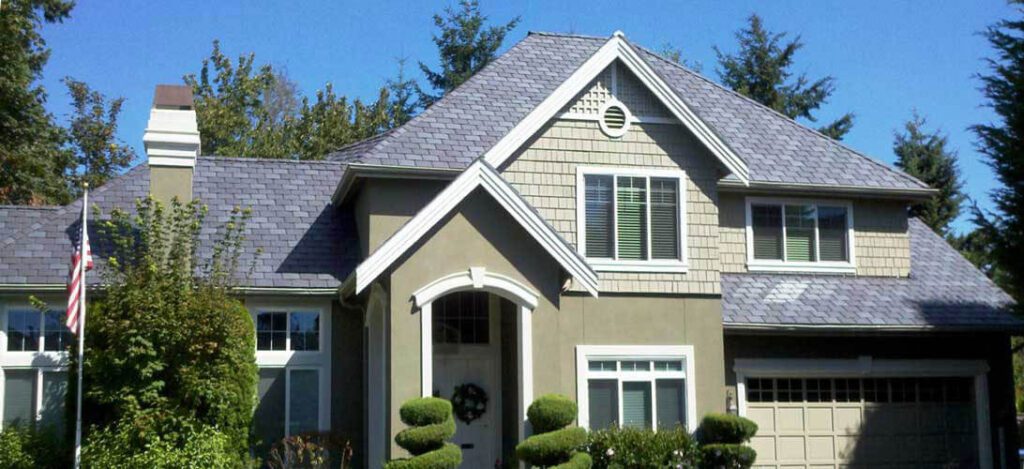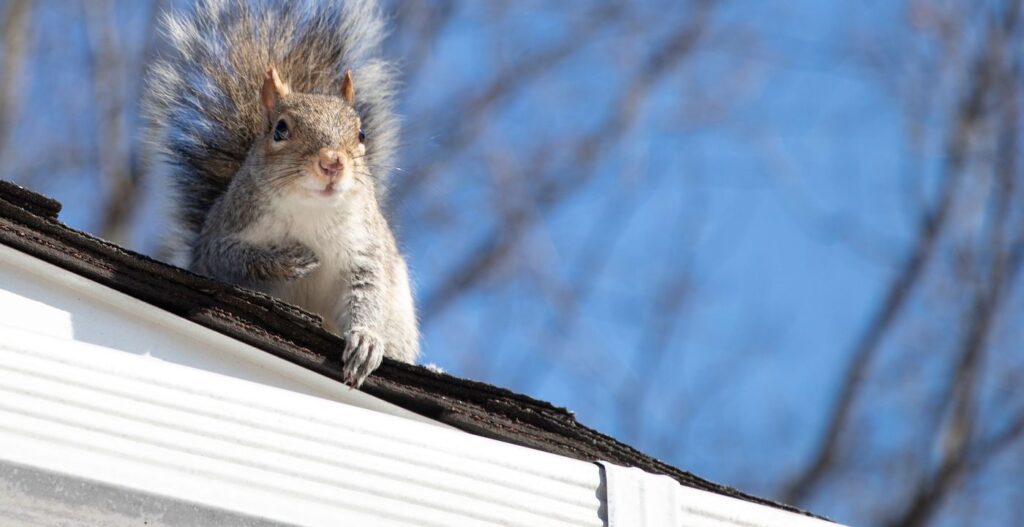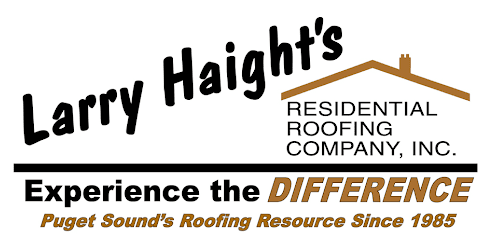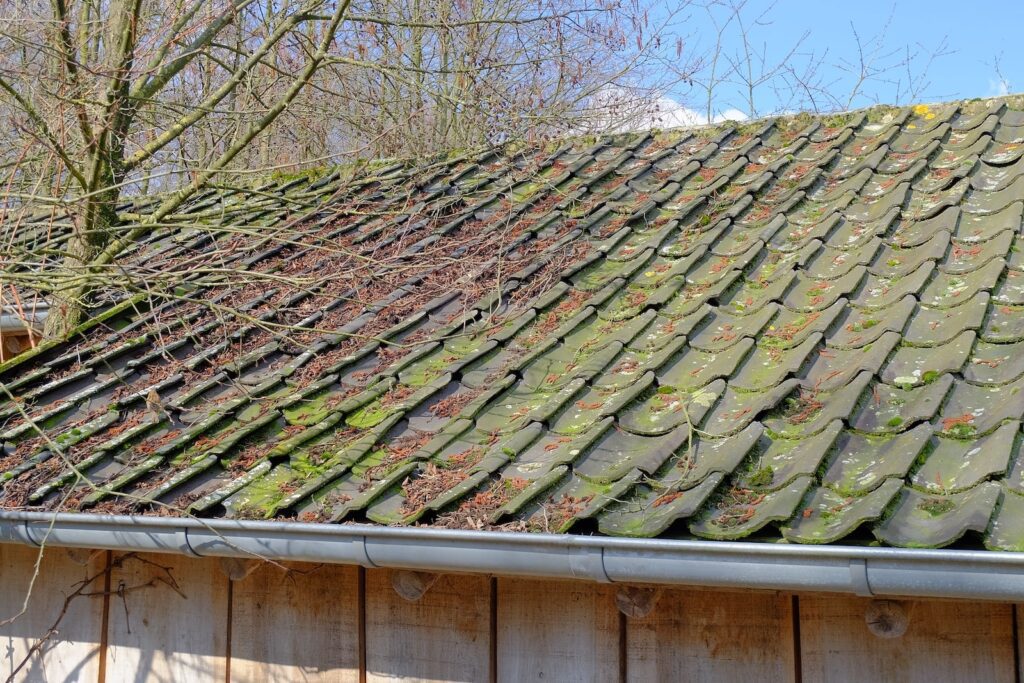Most homeowners think about their roof only when problems arise—a missing shingle after a storm, a mysterious ceiling stain, or an unexpected leak. But what if I told you that spending a few hours (and a few hundred dollars) on roof maintenance could save you tens of thousands down the road?
Your roof works 24/7 to protect everything you care about inside your home. It’s time to give it the attention it deserves.
Preventing Expensive Structural Damage
Your roof serves as your home’s primary defense against the elements. When this barrier becomes compromised by accumulated debris and organic growth, the consequences cascade throughout your home’s structure. Moss and algae don’t just look unsightly—they trap moisture against roofing materials, causing accelerated deterioration.
Organic buildup lifts shingles, exposing vulnerable underlayment and decking to weather damage. Once water penetrates these defenses, it can cause rot in structural timbers, damage insulation, and create entry points for further moisture infiltration. What starts as a simple cleaning issue can quickly escalate into major structural repairs. According to the International Association of Certified Home Inspectors, water damage from roof leaks is one of the leading causes of home insurance claims.
The Hidden Costs of Roof Neglect
When organic debris accumulates on your roof, it doesn’t just sit there harmlessly. Leaves, moss, and algae create a perfect storm of problems that compound over time. Moisture retention becomes your roof’s worst enemy—organic matter acts like a sponge, keeping surfaces wet long after rain stops. This constant dampness accelerates material breakdown and creates ideal conditions for rot to take hold.
Meanwhile, moss roots work their way under shingles, gradually lifting and loosening them. Clogged gutters force water to find alternative paths—often into your home’s structure, causing damage to fascia boards, soffits, and even interior walls. According to HouseLogic by the National Association of Realtors, failing to maintain your roof can reduce its lifespan by up to 50%.
Boosting Property Value and Market Appeal
Picture a potential buyer approaching your home. What’s the first thing they notice? The roof. A stained, moss-covered roof immediately signals neglect, even if the rest of your property is immaculate. Real estate professionals consistently report that roof condition significantly impacts buyer perception and pricing decisions.
According to Zillow, replacing or cleaning your roof can dramatically affect how quickly your home sells and how confident buyers feel about making an offer. A new roof can deliver an average return on investment (ROI) of 60.9%–68.2%, depending on the material. Even if you’re not planning a full roof replacement, maintaining a clean, healthy roof helps preserve your home’s curb appeal and reduces objections during the inspection process.

Significant Long-Term Savings
The economics of roof maintenance are compelling. While professional cleaning typically costs $400–800 annually, roof replacement can run $15,000–25,000 depending on your home’s size and chosen materials. By removing damaging elements like moss, algae, and accumulated debris, you can extend your roof’s lifespan by 8–12 years.
According to Forbes Home, asphalt shingle roofs last around 20–25 years—but with regular care, they can exceed 30 years. Additionally, data from the Insurance Information Institute (III) notes that water damage claims average around $11,650, many of which stem from preventable roof problems.
Insurance and Financial Protection
Insurance companies evaluate properties based on risk factors, and roof condition plays a significant role in their assessments. A neglected roof represents higher liability. Some insurers may increase premiums for properties with poor roof maintenance or even deny claims due to negligence.
According to the National Association of Insurance Commissioners, maintaining records of regular maintenance can help justify claims and may even earn you policy discounts with some providers.
Water Damage Prevention
One of the most expensive consequences of a dirty roof is water damage. When leaves and organic debris build up, they create blockages that prevent proper drainage. Water can pool, seep under shingles, and eventually make its way into your attic or walls. This leads to warped flooring, stained ceilings, mold, and even foundational issues.
EPA guidelines stress that uncontrolled moisture is the root cause of indoor mold growth. Simply cleaning the roof and gutters can prevent all of that.
Combatting Mold, Mildew, and Moisture Damage
Your roof helps control the moisture levels that impact your home’s overall health. When organic debris like leaves and pine needles build up, your roof becomes the perfect environment for mold and mildew to thrive.
FEMA’s Mold Guide highlights that mold can spread quickly into indoor spaces, leading to respiratory issues and major remediation costs. The average cost of mold remediation is around $2,000–$6,000, depending on severity.
Regular roof maintenance—especially in the fall and spring—can dramatically reduce these risks by keeping water flowing off your roof and away from your home.
Deterring Pest Infestations
Accumulated debris creates attractive nesting sites for various pests. Birds may build nests in leafy buildup, while insects like ants and termites are drawn to damp, decaying organic matter. Rodents often use roof debris as shelter and entry points into your home’s structure.
A clean roof eliminates these habitat opportunities, making your property less attractive to unwanted visitors. This proactive approach prevents pest problems before they start, saving you from costly extermination services and potential structural damage caused by wood-boring insects.

Determining Your Roof Cleaning Schedule
Roof cleaning frequency depends on several environmental factors specific to your property. Homes surrounded by mature trees typically require more frequent attention, especially during fall leaf drop and spring when trees shed pollen, catkins, and small branches.
Climate plays a crucial role—humid environments promote faster moss and algae growth, while dry climates may allow longer intervals between cleanings. Roof pitch also matters; flatter roofs collect more debris and require more frequent maintenance than steep-pitched roofs that naturally shed material.
Most homeowners should plan for at least annual cleaning, with many benefiting from bi-annual service. Properties in heavily wooded areas or humid climates may need quarterly attention during peak growing seasons.
DIY vs Professional Roof Cleaning
While the DIY approach might seem cost-effective, roof cleaning presents genuine safety challenges. Slippery surfaces, steep angles, and the height factor create real injury risks. Additionally, improper cleaning techniques can damage roofing materials or void manufacturer warranties.
DIY risks include falls from ladders or roofs, damage from pressure washing, harm to landscaping from chemical runoff, and potential warranty violations. Professional services typically cost $400-800 for most homes, include comprehensive gutter cleaning, and often provide basic roof inspections to identify potential problems early.
Professional cleaners use appropriate techniques like soft washing, have proper safety equipment, carry insurance coverage, and understand how to protect your landscaping during the cleaning process. Many also offer maintenance plans that include regular inspections and priority scheduling.
How to Clean Your Roof (Safely and Effectively)
Cleaning your roof is about more than just looks—it helps prevent damage from moss, algae, and debris. Here’s a safe and effective way to do it:
- Remove Loose Debris
Start by blowing off leaves, pine needles, and branches with a leaf blower. Focus on valleys and gutters where buildup is common. - Lightly Brush Moss
Use a medium-bristle brush to gently knock off thicker moss. Avoid scrubbing hard to prevent removing shingle granules. - Clean Gutters and Downspouts
Clear out any remaining buildup in your gutters to ensure proper drainage. - Apply Zinc Sulfate
Spread zinc sulfate powder along ridge lines and under eaves. This kills moss by drying it out and will rinse away safely over time with rain. - Optional: Bleach or Soft Wash
If additional cleaning is desired, apply a 1:1 solution of water and chlorine bleach using a garden sprayer. Let it sit for 15–20 minutes, then rinse with clean water. Do not use a pressure washer—it can damage shingles. - Protect Landscaping
Wet and cover nearby plants to shield them from runoff and chemical exposure. Rinse again after the roof is cleaned.
Pro Tip: Clean your roof on a calm, overcast day to prevent cleaning agents from evaporating too quickly. If your roof is steep, high, or heavily soiled, it’s safer and more effective to hire a professional.
For more detailed information, check out our blog on the best roof shingle cleaners.
Making Roof Maintenance a Priority
Roof maintenance isn’t glamorous work, but it’s one of the most cost-effective investments you can make in your home. Whether you choose DIY or professional service, establishing a regular cleaning routine will extend your roof’s lifespan, prevent costly emergency repairs, maintain your home’s market value, and protect your family’s health and safety.
Want more information on the benefits of cleaning your roof? For roof maintenance and other roofing service in the Seattle area, you can trust Larry Haight’s Residential Roofing Company. To get started, contact us today!


